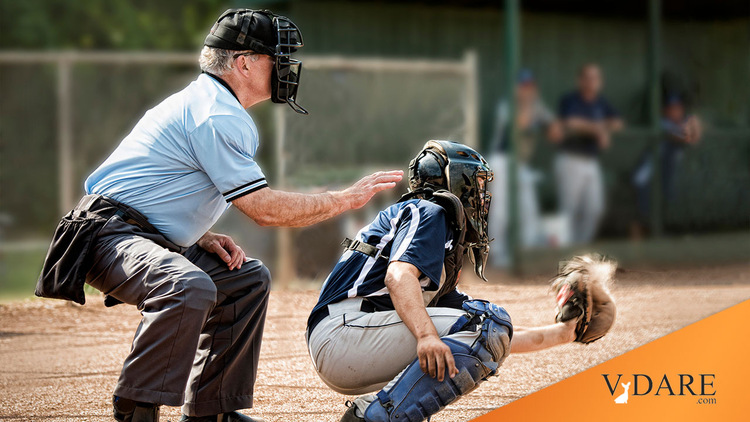Earlier: Babe Ruth Vs. Shohei Ohtani
Baseball is a very traditional game, so it seldom tinkers with its rules. But the Moneyball revolution in analytics encouraged all sorts of deleterious trends encouraging the Three True Outcomes—homer, walk, or strikeout—above anything involving fielders and runners actually, you know, running.
So, this season, MLB has introduced some changes.
First, second, and third base (but not home plate) were marginally enlarged, presumably to cut down on the number of times that the sliding baserunner bounces off the bag at the end of a slide and is seen on video review to have gotten tagged out after beating the throw. The idea is to encourage more daring base-running.
A pitch clock has been added to keep pitchers and batters from wasting time to gain an advantage over each other, which so far is shortening games by approaching 15% and thus boosting the action per hour considerably.
And the extreme defensive shifts facilitated by data science about where each hitter is likely to drive the ball have been banned. Now, you must have two infielders on the dirt left of second base and two on the dirt right of second base.
I knew we needed to get rid of the defensive shift when I watched the pitcher-slugger Shohei Ohtani rip a 110 mph line drive toward the gap in right center. Ohtani, one of the faster men in baseball, comes racing out of the box thinking triple.
But, due to the shift, the second baseman was playing as a fourth outfielder 200 feet deep. He fields the smash on one hop and throws Ohtani out at first base, 4-3.
Sorry, but on that kind of contact, I want to see Shohei slide into third trying to beat the rightfielder’s throw, not trot back to the dugout and sit down.
Ohtani, like his only comparable, Babe Ruth, is a very aggressive baserunner. Over the last two seasons, along with his many other improbably accomplishments, he was second in the American League in triples with 14. In fact, like Ruth, he’s probably overly aggressive and, like Ruth (who got thrown out trying to steal second to end the Grover Cleveland Alexander 7th game of the 1926 World Series), tends to get thrown out more than is scientifically optimal. Ohtani has been thrown out on 34% of his stolen base attempts over the last two seasons, which is worse than not trying to steal at all. In contrast, Ohtani’s ultra-scientific teammate Mike Trout has given up attempting to steal since he turned 28, being successful on 4 out of his only 5 attempts in this decade.
Still, as a spectator sport, baseball really needs to encourage its Ruth-like figures.
[Comment at Unz.com]













